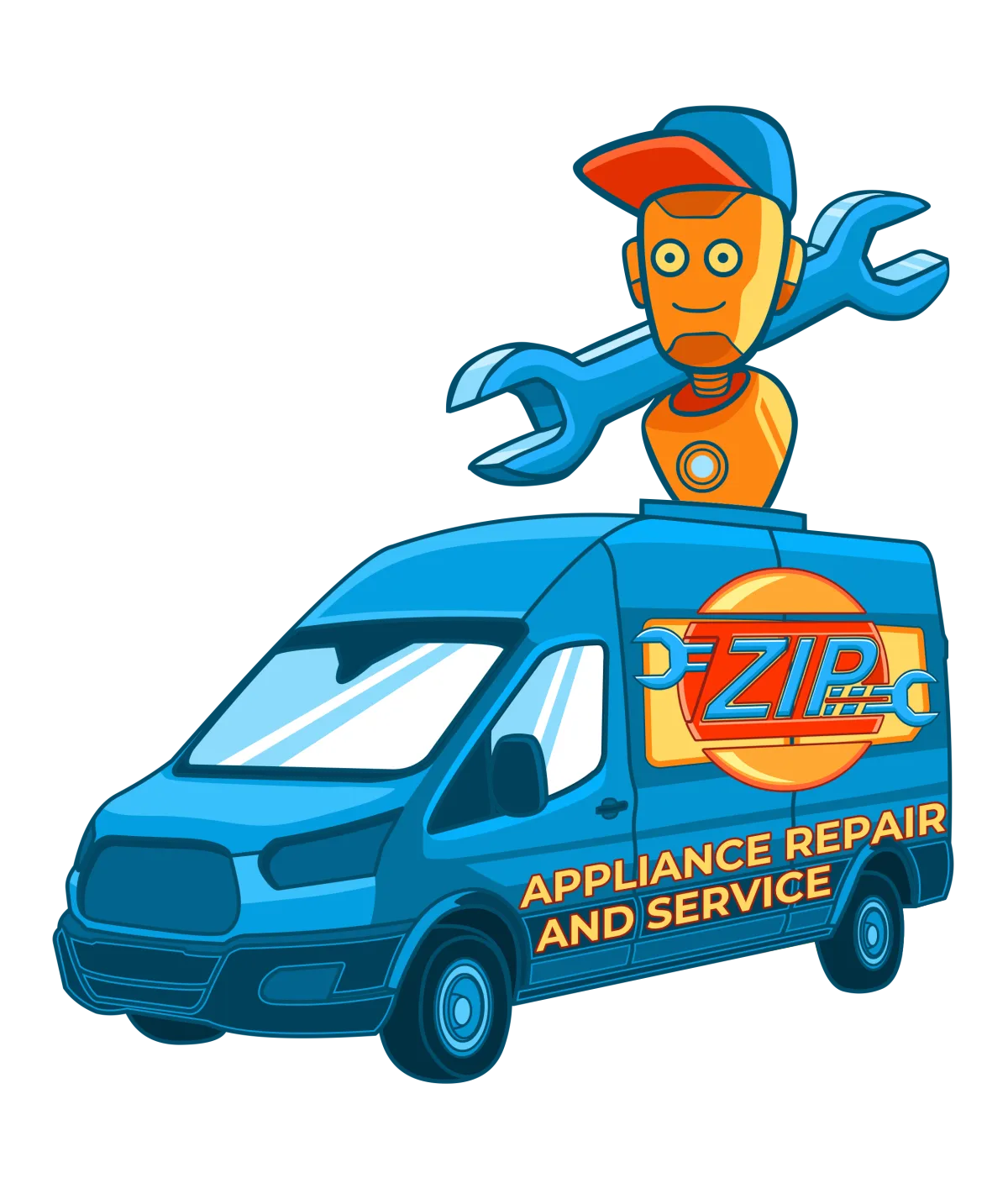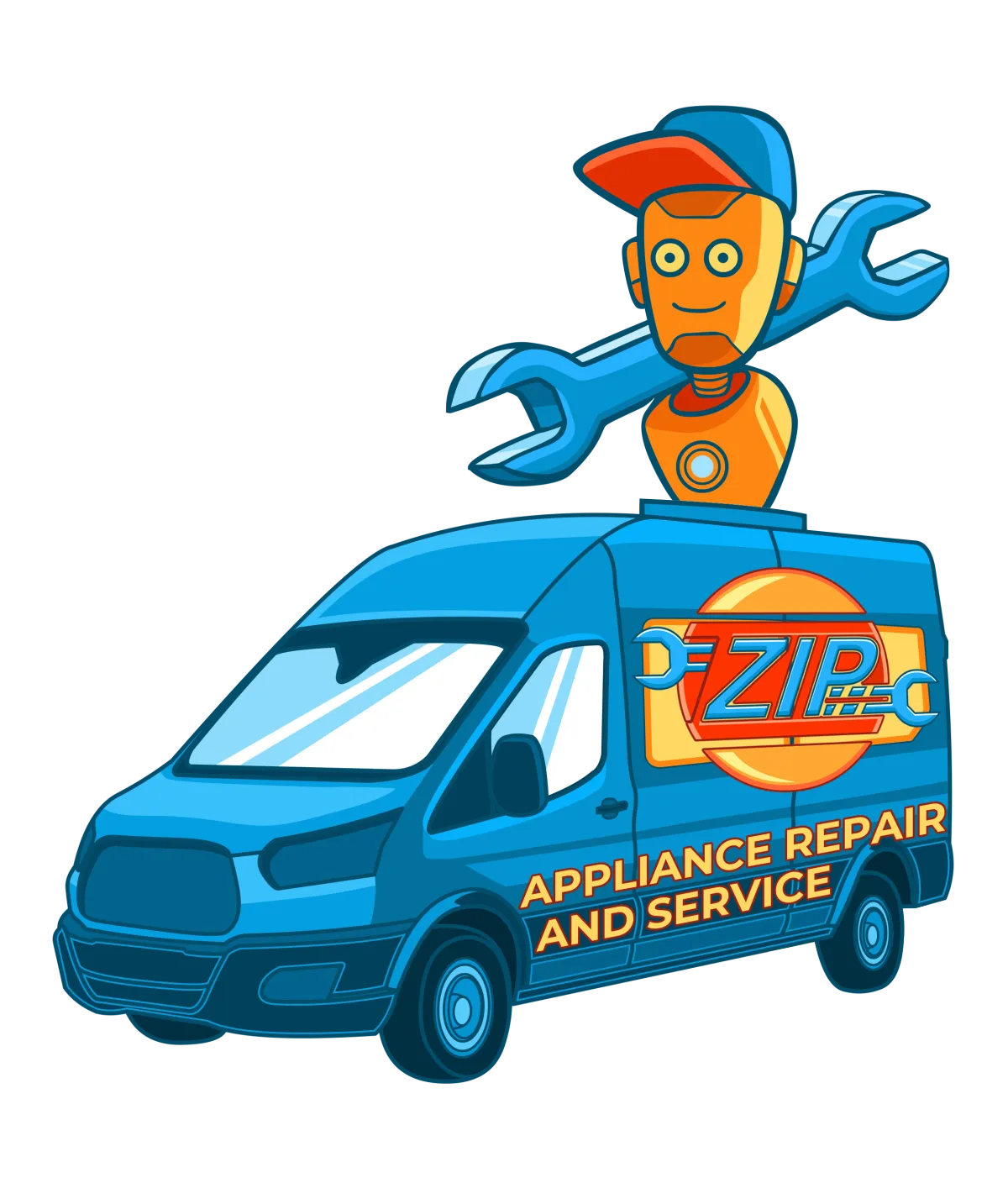THE FASTEST TOOLS IN TOWN
ZIP APPLIANCE REPAIR & SERVICE
Phone: (559) 272-4265
Phone: (559) 272-4265
Appliance Repair Tips For Fresno, CA Residents

Dryer Shuts Off Mid-Cycle? Here’s the Fix
"When your dryer shuts off mid-cycle, frustration sets in fast. But with the right fix, you can restore its performance and keep your laundry routine on track." - Appliance Boss
Introduction
A dryer that unexpectedly shuts off mid-cycle can be incredibly frustrating, especially when you're left with damp clothes and no clear solution. Understanding the root cause is key to resolving the issue and preventing future breakdowns. This guide will walk you through the most common reasons your dryer stops mid-cycle and provide actionable solutions to get it running smoothly again.
Understanding Why Your Dryer Shuts Off Mid-Cycle
Dryers are designed to operate efficiently, but when something goes wrong, safety mechanisms trigger an automatic shutdown. This is often due to overheating, electrical malfunctions, or airflow restrictions. Identifying the underlying problem is crucial to restoring proper functionality.
Common Causes of a Dryer Shutting Off Mid-Cycle
Overheating Issues
When the dryer overheats, it triggers a safety switch to prevent potential fire hazards. This can happen due to lint buildup or blocked vents.
Faulty Door Switch
If the door switch is malfunctioning, the dryer will think the door is open and stop the cycle.
Malfunctioning Thermal Fuse
The thermal fuse is a safety component that blows when the dryer overheats. Once it’s blown, the dryer won’t continue running.
Clogged Vents and Lint Buildup
Blocked vents restrict airflow, causing the dryer to overheat and shut off as a protective measure.
Electrical Problems
Faulty wiring or a tripped circuit breaker can interrupt the power supply, causing the dryer to stop mid-cycle.

The Role of the Dryer’s Safety Features
How the Thermal Fuse Protects Your Dryer
The thermal fuse is a small yet essential component that prevents the dryer from overheating and potentially catching fire.
Importance of the High-Limit Thermostat
This thermostat monitors the dryer’s internal temperature and shuts off the heating element when it gets too hot.
Signs Your Dryer is Overheating
A burning smell during operation
The exterior of the dryer feels excessively hot
The dryer shuts off after a few minutes of running
Quick Troubleshooting Steps
Check the power supply: Ensure the dryer is plugged in and the circuit breaker isn’t tripped.
Inspect the door latch: Make sure the door is securely closed.
Clean the lint filter: A clogged filter can restrict airflow and cause overheating.
How to Fix Common Dryer Problems
Replacing a Blown Thermal Fuse
Locate the thermal fuse, test it with a multimeter, and replace it if there’s no continuity.
Cleaning Out Clogged Vents
Disconnect the vent hose and clear out any lint or debris blocking airflow.
Repairing or Replacing the Door Switch
If the door switch isn’t engaging properly, replacing it is a simple and affordable fix.
When to Reset Your Dryer
Locating the Reset Button
Most dryers have a reset button on the control panel or near the motor.
How to Properly Perform a Reset
Unplug the dryer, wait a few minutes, then press the reset button to restart the system.
Preventative Maintenance Tips
Regularly clean the lint trap
Inspect and clean the dryer vent every few months
Avoid overloading the dryer with heavy loads
The Impact of Poor Ventilation
How Blocked Vents Cause Overheating
When air can’t circulate properly, heat builds up, triggering the dryer’s safety shutdown.
The Dangers of Lint Buildup
Excess lint not only causes overheating but also increases the risk of a dryer fire.
How to Test Your Dryer’s Components
Using a Multimeter to Check Electrical Connections
Test the heating element, thermal fuse, and door switch for continuity.
Testing the Heating Element for Continuity
A broken heating element can cause the dryer to overheat or stop working altogether.
DIY Fixes vs. Professional Repair
When to Attempt Repairs Yourself
Simple tasks like cleaning vents or replacing a fuse can be done at home.
Signs You Need a Professional Technician
If you’re dealing with electrical wiring issues or motor failure, it’s best to call an expert.
The Cost of Ignoring the Issue
Damage to internal components
Higher energy bills due to inefficient performance
Potential fire hazards
How Weather and Humidity Affect Your Dryer’s Performance
Impact of High Humidity on Drying Time
Excess moisture in the air makes it harder for clothes to dry efficiently.
Adjusting Settings for Seasonal Changes
Using the appropriate heat setting during colder months can improve performance.
Upgrading to a More Efficient Dryer
Features to Look for in Modern Dryers
Energy-efficient models with moisture sensors and advanced airflow systems prevent overheating.
Energy-Saving Options
Heat pump dryers and ventless models are great alternatives for reducing energy consumption.
How to Safely Use Your Dryer to Prevent Future Issues
Load the dryer evenly
Use the correct heat settings for different fabrics
Clean the lint trap after every use
Common Myths About Dryer Problems
High Heat Removes Wrinkles Faster
In reality, high heat can damage fabrics and increase the risk of shutdowns.
Lint Traps Catch All Debris
Lint traps only catch surface lint. The rest accumulates in the vent system.
Frequently Asked Questions
How Often Should I Clean the Dryer Vent?
Every 3 to 6 months, depending on usage.
Can a Faulty Dryer Cause a Fire?
Yes, especially if there’s excessive lint buildup or a malfunctioning heating element.
Real-Life Success Stories from Homeowners
How Simple Fixes Saved Hundreds on Repairs
One homeowner replaced a thermal fuse and avoided a $200 service call.
Lessons Learned from Common Mistakes
Neglecting vent cleaning led to repeated shutdowns and costly repairs.
Conclusion
If your dryer keeps shutting off mid-cycle, addressing the root cause is essential for preventing long-term damage. From checking the thermal fuse to clearing out clogged vents, these simple fixes can save you time and money.
If the issue persists, Zip Appliance Repair and Service is here to help.
Contact Information
Visit: fresno.ziprepairservice.com
Call: (559) 272-4265

Dryer Shuts Off Mid-Cycle? Here’s the Fix
"When your dryer shuts off mid-cycle, frustration sets in fast. But with the right fix, you can restore its performance and keep your laundry routine on track." - Appliance Boss
Introduction
A dryer that unexpectedly shuts off mid-cycle can be incredibly frustrating, especially when you're left with damp clothes and no clear solution. Understanding the root cause is key to resolving the issue and preventing future breakdowns. This guide will walk you through the most common reasons your dryer stops mid-cycle and provide actionable solutions to get it running smoothly again.
Understanding Why Your Dryer Shuts Off Mid-Cycle
Dryers are designed to operate efficiently, but when something goes wrong, safety mechanisms trigger an automatic shutdown. This is often due to overheating, electrical malfunctions, or airflow restrictions. Identifying the underlying problem is crucial to restoring proper functionality.
Common Causes of a Dryer Shutting Off Mid-Cycle
Overheating Issues
When the dryer overheats, it triggers a safety switch to prevent potential fire hazards. This can happen due to lint buildup or blocked vents.
Faulty Door Switch
If the door switch is malfunctioning, the dryer will think the door is open and stop the cycle.
Malfunctioning Thermal Fuse
The thermal fuse is a safety component that blows when the dryer overheats. Once it’s blown, the dryer won’t continue running.
Clogged Vents and Lint Buildup
Blocked vents restrict airflow, causing the dryer to overheat and shut off as a protective measure.
Electrical Problems
Faulty wiring or a tripped circuit breaker can interrupt the power supply, causing the dryer to stop mid-cycle.

The Role of the Dryer’s Safety Features
How the Thermal Fuse Protects Your Dryer
The thermal fuse is a small yet essential component that prevents the dryer from overheating and potentially catching fire.
Importance of the High-Limit Thermostat
This thermostat monitors the dryer’s internal temperature and shuts off the heating element when it gets too hot.
Signs Your Dryer is Overheating
A burning smell during operation
The exterior of the dryer feels excessively hot
The dryer shuts off after a few minutes of running
Quick Troubleshooting Steps
Check the power supply: Ensure the dryer is plugged in and the circuit breaker isn’t tripped.
Inspect the door latch: Make sure the door is securely closed.
Clean the lint filter: A clogged filter can restrict airflow and cause overheating.
How to Fix Common Dryer Problems
Replacing a Blown Thermal Fuse
Locate the thermal fuse, test it with a multimeter, and replace it if there’s no continuity.
Cleaning Out Clogged Vents
Disconnect the vent hose and clear out any lint or debris blocking airflow.
Repairing or Replacing the Door Switch
If the door switch isn’t engaging properly, replacing it is a simple and affordable fix.
When to Reset Your Dryer
Locating the Reset Button
Most dryers have a reset button on the control panel or near the motor.
How to Properly Perform a Reset
Unplug the dryer, wait a few minutes, then press the reset button to restart the system.
Preventative Maintenance Tips
Regularly clean the lint trap
Inspect and clean the dryer vent every few months
Avoid overloading the dryer with heavy loads
The Impact of Poor Ventilation
How Blocked Vents Cause Overheating
When air can’t circulate properly, heat builds up, triggering the dryer’s safety shutdown.
The Dangers of Lint Buildup
Excess lint not only causes overheating but also increases the risk of a dryer fire.
How to Test Your Dryer’s Components
Using a Multimeter to Check Electrical Connections
Test the heating element, thermal fuse, and door switch for continuity.
Testing the Heating Element for Continuity
A broken heating element can cause the dryer to overheat or stop working altogether.
DIY Fixes vs. Professional Repair
When to Attempt Repairs Yourself
Simple tasks like cleaning vents or replacing a fuse can be done at home.
Signs You Need a Professional Technician
If you’re dealing with electrical wiring issues or motor failure, it’s best to call an expert.
The Cost of Ignoring the Issue
Damage to internal components
Higher energy bills due to inefficient performance
Potential fire hazards
How Weather and Humidity Affect Your Dryer’s Performance
Impact of High Humidity on Drying Time
Excess moisture in the air makes it harder for clothes to dry efficiently.
Adjusting Settings for Seasonal Changes
Using the appropriate heat setting during colder months can improve performance.
Upgrading to a More Efficient Dryer
Features to Look for in Modern Dryers
Energy-efficient models with moisture sensors and advanced airflow systems prevent overheating.
Energy-Saving Options
Heat pump dryers and ventless models are great alternatives for reducing energy consumption.
How to Safely Use Your Dryer to Prevent Future Issues
Load the dryer evenly
Use the correct heat settings for different fabrics
Clean the lint trap after every use
Common Myths About Dryer Problems
High Heat Removes Wrinkles Faster
In reality, high heat can damage fabrics and increase the risk of shutdowns.
Lint Traps Catch All Debris
Lint traps only catch surface lint. The rest accumulates in the vent system.
Frequently Asked Questions
How Often Should I Clean the Dryer Vent?
Every 3 to 6 months, depending on usage.
Can a Faulty Dryer Cause a Fire?
Yes, especially if there’s excessive lint buildup or a malfunctioning heating element.
Real-Life Success Stories from Homeowners
How Simple Fixes Saved Hundreds on Repairs
One homeowner replaced a thermal fuse and avoided a $200 service call.
Lessons Learned from Common Mistakes
Neglecting vent cleaning led to repeated shutdowns and costly repairs.
Conclusion
If your dryer keeps shutting off mid-cycle, addressing the root cause is essential for preventing long-term damage. From checking the thermal fuse to clearing out clogged vents, these simple fixes can save you time and money.
If the issue persists, Zip Appliance Repair and Service is here to help.
Contact Information
Visit: fresno.ziprepairservice.com
Call: (559) 272-4265
If your dryer has been giving you problems, contact Zip Appliance Repair & Service at (559) 272-4265

Appliance Repair In A Zip
If you need a dryer repair call our Team at (559) 272-4265, or visit our online scheduling page to request service.
Appliance Repair
HAVE A QUESTION, CALL (559) 272-4265

Online Offers
Take advantage of our online discount offers - save time and money...

Residential & Commercial appliances
See what our company can do for you

Appliance Repair Tips
If your appliance is not working properly...

1405 Commercial Way ste 100
Bakersfield, CA 93309
Lic # 1116346
Equipment We Sevice
- A Call To Confirm Your Appointment Time
- A Email Detailing Your Assigned Technician
- Information Needed Before The Repair Can Be Started
- An Estimate Of Work To Be Done
© 2025 ZIP APPLIANCE REPAIR & SERVICE LLC







